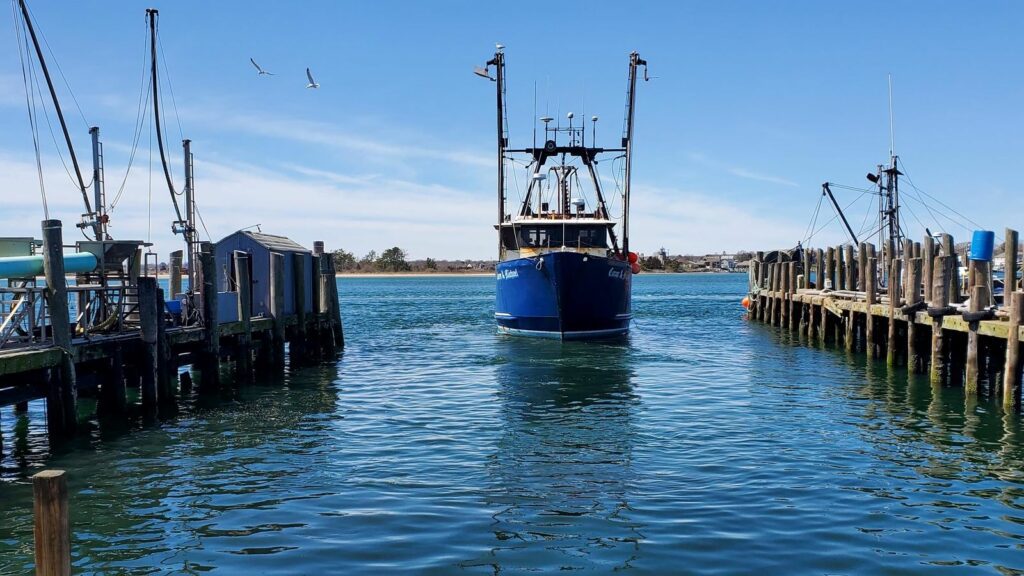Report Examines New England’s Ability to Supply Food for the Region
June 5, 2023
If the apocalypse occurred everywhere but New England, would the region be able to supply reliable, safe, and abundant food for its residents? What would it take to grow, raise, produce, harvest, and catch regional food and get it into homes and other places people eat?
A report released June 5 by the New England State Food System Planners Partnership delves into whether the six New England states could provide 30% of the region’s food by 2030.
Sixteen researchers examined the food supply chain in New England for the report by the food partnership, a collaboration between the Rhode Island Food Policy Council, five other state-level organizations, and Food Solutions New England.
The report outlines the role New Englanders can play in making the region’s food systems more self-reliant. For example, according to the report, Rhode Island is home to 7% of the region’s population and accounts for just short of that percentage in retail food sales (6.3%). It is also home to 6.6% of food sector employment in the region. But the Ocean State has only 1.5% of agricultural land, meaning the state’s local food supply chain is highly reliant on producers from outside its borders.
“Becoming more self-reliant requires expanding our food supply chains, building up our infrastructure, and retaining control of our land and sea resources,” said Nessa Richman, network director of the Rhode Island Food Policy Council, a member of the New England State Food System Planners Partnership. “In return, it can mean more local jobs, a competitive business environment, and a more predictable food system that is less susceptible to interruption like natural disasters or public health emergencies.”
Big changes
New England states had a total food expenditure of $87.1 billion in 2019 — about $5,868 per person. In order to ensure that 30% of New England’s food needs are met by New England products, the average New Englander would have to spend about $1,760 of that total food expenditure on New England-produced food, according to the report. By 2030, total food expenditures are projected to reach $98.4 billion — about $1,890 per person — in New England to reach the 30% goal.
How would food consumption have to change to make the best use of regional food? The report creates two scenarios: Unchanged Eating, in which everything stays the same, and Resilient Eating, a pattern that hews more closely to U.S. dietary guidelines.
The average adult in the United States, according to the report, eats about 2,780 calories a day across all categories (2,940 if you add alcohol), well above the U.S. Department of Agriculture’s dietary guidelines. Under Resilient Eating, consumers would eat 2,320 calories a day.
The report, while admitting that it would be difficult to predict how people’s eating habits might change by 2030, attempts to envision a way of eating that would allow New Englanders to become more self-reliant on foods from the region.
In short, New Englanders would have to substantially cut back on sweeteners, fats, and processed foods, because not many of these items are produced in the region, and adopt a healthier diet. The report recommends increasing vegetable consumption to 3 cups a day, a 56% increase over current eating habits. Fruit consumption, according to the report, should jump to 2 cups a day, doubling current eating habits. Grain consumption would remain the same, and dairy consumption would be halved, from 3 cups a day to 1.5 cups, according to the report. Protein consumption would shrink to 43.75 ounces a week, down 23% from average consumption. Fats and oils would be reduced by half, to 30 grams a day. That leaves room for about 161 calories from sweeteners and alcohol, compared to the average of 519 calories from sugar and alcohol that are consumed on average.
The report admits, however, that the Resilient Eating guidelines, such as increased consumption of fruits and vegetables, would make it more challenging to increase regional self-reliance, since production would have to dramatically increase.
Some elements of Resilient Eating would be environmentally beneficial, the report says. Reducing red meat consumption and eating more nuts and beans can help reduce greenhouse gas emissions and, if combined with sustainable production methods such as increasing grasslands, can reduce nutrient runoff and build soil carbon.
How much would this healthier way of eating cost? The report compares the resilient way of eating to the USDA’s 2021 Thrifty Food Plan (TFP), which estimates that a family of four would spend about $10,00 a year, or $835 a month, on healthy food. The cost of the TFP is broken down by category: $1,453 annually on dairy; $1,399 on fruits; $2,467 on proteins; $2,398 on vegetables; and $1,595 on grains, with $715 left for miscellaneous food purchases.
The Resilient Eating plan, according to the report, would lower some costs and increase others. For instance, 22% of resilient eaters’ budgets would go toward vegetables, compared to 26% on the TFP. Fruits would be 27% of the budget, instead of 15% under the TFP. Grains would remain the same on both plans, at 17% of the budget. Dairy would be 12% of a resilient eater’s budget, compared to 16% on the TFP. Proteins would be 22% of a resilient eater’s budget, and 27% on the TFP.
A divided region
When it comes to regional farms and fisheries, the northern New England states have most of the farmland, and the southern states have most of the consumers. To move toward the 30% figure, it would mean enormous investment in keeping and expanding agricultural land in the northern states, and using the people, political power, and funding sources from southern New England, the report says.
In 2017, the most recent year for which data is available, Maine had 63.3% of the region’s agricultural land, at 62,000 acres. Rhode Island had 2.2%, at 2,154 acres. It was the same for fruit production, with Maine at 59% with 42,871 acres, and Rhode Island at 0.8% with 609 acres.

When it comes to seafood, Massachusetts is on top, with 588 million pounds of seafood produced in 2020, followed by Maine, with 170 million pounds; Rhode Island, with 86 million pounds; Connecticut, with 17 million pounds; and New Hampshire, with 6 million pounds.
“The gap between what Rhode Island consumes and what it produces can come from across the country or even the world, or it can come from right next door at a farm, in a greenhouse, or from a fishery right here in New England,” said Julianne Stelmaszyk, director of food strategy at Rhode Island Commerce. “Together, we can build Rhode Island’s next five-year food system development plan in order to strengthen local farms and food businesses, be less dependent on a global food supply, and expand access to agricultural land so more of the food consumed here can be produced here.”
The region produced about 21% as much food as it consumed, by weight, between 2010 and 2019, the report says. But that doesn’t mean the region supplied 21% of its food to itself, because some of the food left the region to be eaten elsewhere. Interstate shipments of food are not tracked in a uniform way, so the states don’t know how much of the food produced in New England stays here. A small number of foods are produced in large quantities relative to consumption in the region and had self-reliance ratios near or exceeding 100% — cranberries and lobster, for instance. But foods like lettuce, beef, and wheat had a self-reliance ratio of less than 10%, according to the report.
Regional self-reliance (RSR) percentages were calculated by dividing mean regional production by mean regional consumption and then multiplying by 100. If the RSR is 100% or higher, the region can meet all consumption itself; if it’s less than 100%, it can’t.
The region is largely self-reliant on starchy vegetables (82%) thanks to Maine’s potato production, but other vegetables, not so much, according to the report. As would be expected, the region is also fairly self-reliant in seafood (32%) and eggs (19%). But pork, chicken, and turkey were all below 1%.
Building the region’s food resilience requires collaboration between state-level and regional food system organizations, “along with a significant and coordinated investment of resources,” the report concludes.
“Each of us — whether we are a farmer, fisher, food entrepreneur, retailer, nonprofit organization, researcher, educator … or a ‘eater’ — has an important role to play. Each of us has something to contribute.”




This appears to be extremely impractical. What would be a better approach would be to export produce and products from RI farms and aquaculture to other states in return for other foods that we desire.
Trying to restrict what RI residents can eat to locally produced food is impractical.